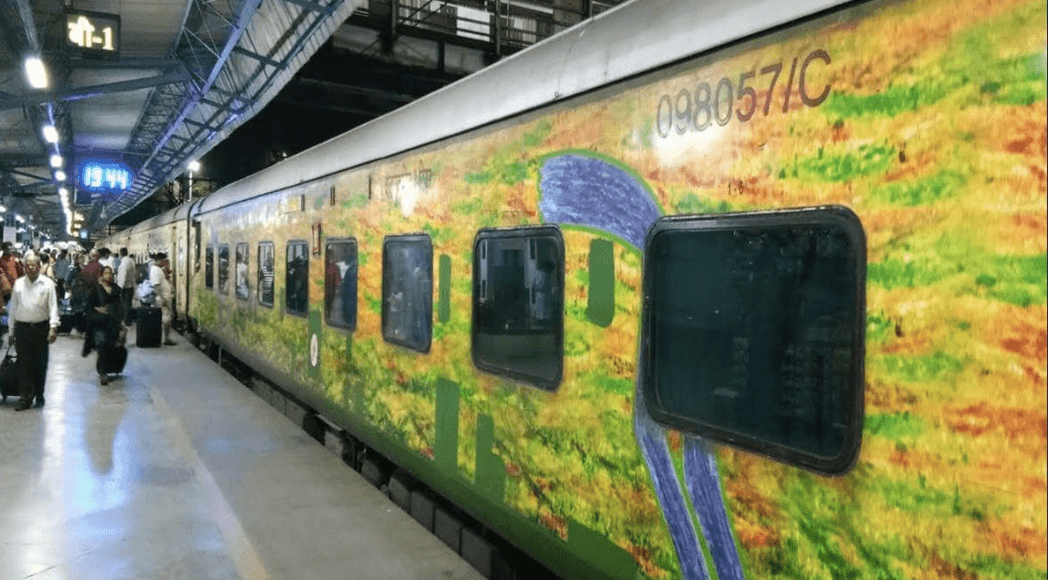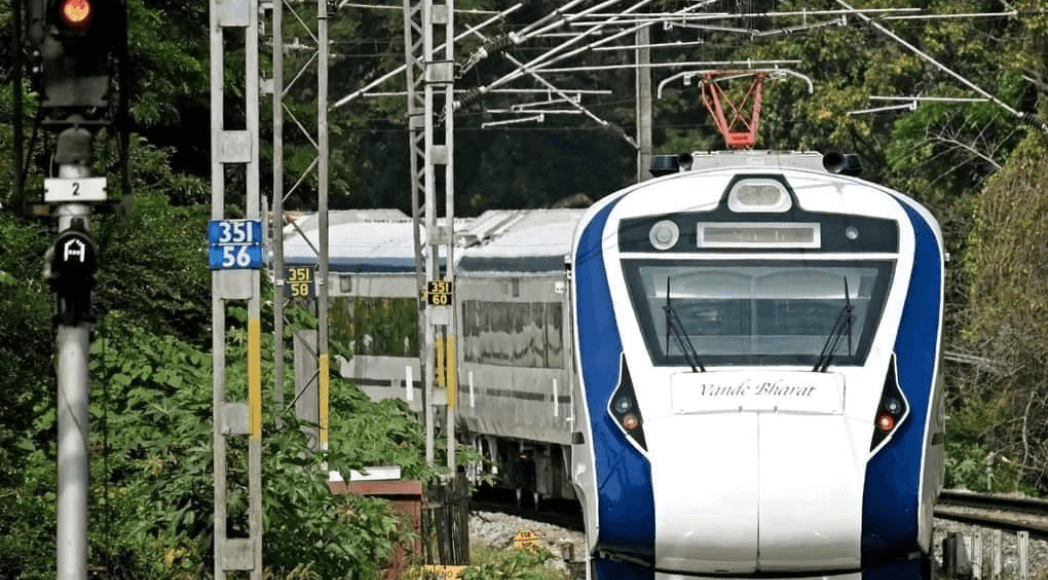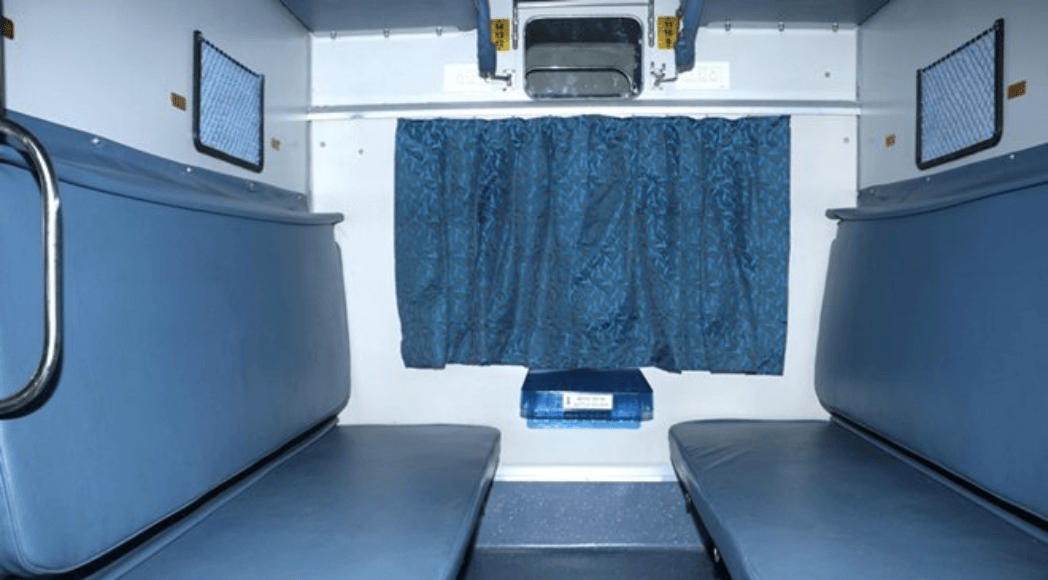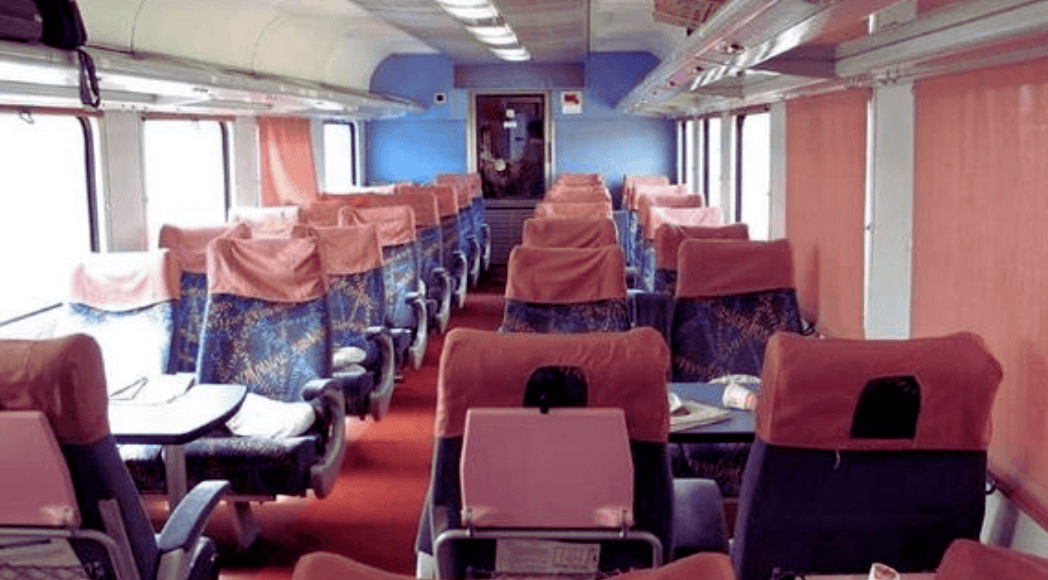
India’s wide-stretching railway network offers an affordable and user-friendly mode of transportation for travelers of all kinds. With a range of variegated train types and seat classes to segregate from, it can be overwhelming to decide which one to book. In this article, we will explore the variegated types of train seats in India to help trekkers make an informed visualization on their next train journey.
First and Second AC classes offer the most luxurious travel experience, with private cabins and well-appointed bedding. For a increasingly affordable option, trekkers can opt for the Third AC class, which offers air workout and meals but has cabins with six berths. For shorter journeys, Second Seating (2S) seats are the cheapest option, with non-air-conditioned benches for seating.

For travelers looking for a wastefulness of repletion and affordability, there are several other seat classes to segregate from. Executive Matriculation Chair Car seats offer well-appointed seating with meals, while Chair Car seats provide a increasingly affordable alternative. Local trains in India often offer only second seating, with some first-class seats misogynist on some trains.
By understanding the variegated types of train seats available, trekkers can make an informed visualization on which option suits their travel needs and budget. Whether traveling for merchantry or pleasure, India’s railway network provides a cost-effective and efficient mode of transportation for trekkers to explore the diverse regions of this vast and fascinating country.
Types Of Train In India
India has one of the largest railway networks in the world, spanning over 68,000 km and connecting scrutinizingly every corner of the country. With such a vast network, there are several types of trains that run in India, catering to the needs of millions of passengers every day. In this article, we will explore the variegated types of trains in India and their unique features.
Express Trains:

Express trains are long-distance trains that connect major cities and towns wideness the country. They stop at a limited number of stations, making them faster than local trains. Express trains often have reserved seating, and passengers can typesetting their seats in advance. Some popular examples of express trains in India are the Rajdhani Express, Shatabdi Express, Duronto Express, and Garib Rath Express.
Local Trains:

Local trains are short-distance trains that run within a municipality or region. They stop at most stations withal the route and do not often have reserved seating. Local trains are popular among daily commuters who use them to travel to work or school. In Mumbai, the local train network is known as the Mumbai Suburban Railway and is one of the busiest in the world, delivering millions of passengers every day.
Shatabdi Express:

The Shatabdi Express is a high-speed, day-train that connects major cities in India. It is fully refrigerated and offers both Executive Matriculation and Chair Car seating options. The Executive Matriculation seats are increasingly spacious and well-appointed than the Chair Car seats, and passengers are served complimentary meals during the journey. The Shatabdi Express is known for its punctuality and speed, making it a popular nomination for merchantry travelers and tourists.
Rajdhani Express:

The Rajdhani Express is a premium, long-distance train that connects major cities in India. It is fully refrigerated and offers both First Matriculation and AC 2-tier seating options. The First Matriculation seats are individual cabins that offer privacy and comfort, while the AC 2-tier seats are shared cabins with taps for privacy. The Rajdhani Express is known for its speed, luxury, and on-time performance.
Duronto Express:

The Duronto Express is a non-stop, long-distance train that connects major cities in India. It is fully refrigerated and offers both First Matriculation and AC 2-tier seating options. The Duronto Express is known for its speed and comfort, as it covers long distances without any stops. It is a popular nomination for travelers who want to reach their destination quickly without any interruptions.
Toy Train

Toy trains are miniature replicas of real trains that are designed for children to play with. They can come in various types, including electric, battery-operated, or wooden trains. Toy trains typically run on specially designed tracks that are easy to hoke and disassemble, permitting children to create variegated layouts and configurations.
Read More: Toy Train Kalka To Shimla
Playing with toy trains can have numerous benefits for children, including improving their motor skills, spatial reasoning, and problem-solving abilities. Toy train sets can moreover include traps such as buildings, trees, people, and animals, which can help create a increasingly realistic scene and encourage imaginative play.
Vande Bharat Express

Vande Bharat Express is a semi-high-speed intercity electric train in India that was designed and manufactured by Integral Mentor Factory (ICF), Chennai. It is one of the fastest and most luxurious trains in India, with a maximum speed of 160 km/hour. Vande Bharat Express has several unique features, including modern passenger suavities such as Wi-Fi, infotainment screens, and bio-vacuum toilets. The train has a total of 16 coaches, including two executive coaches and 14 chair car coaches. It runs on two routes, Delhi-Varanasi and Delhi-Katra, and has wilt popular among passengers for its comfort, speed, and efficiency. The introduction of Vande Bharat Express represents a significant step forward in India’s efforts to modernize and modernize its railway infrastructure.
Types Of Train Seats In India
India has one of the largest railway networks in the world, and millions of passengers travel by train every day. With a variety of trains and travel classes, Indian Railways offers a range of options for passengers to segregate from. In this article, we will explore the variegated types of train seats in India.
Sleeper Matriculation

The Sleeper Matriculation is the most worldwide type of train seat in India. It is an affordable option that offers a bed for sleeping at night and can unbend up to six people in a single compartment. The beds are foldable and serve as seating during the day. Sleeper Matriculation seats do not have to be air-condition, but fans are provided. This matriculation is popular among upkeep travelers and families.
AC 3-Tier

The AC 3-Tier is a increasingly well-appointed option than the Sleeper Class, with air-conditioning and sheets provided. It accommodates up to four people in a single compartment, and each wharfage has taps for privacy. The seats are wider than the Sleeper Matriculation and have increasingly legroom. This matriculation is popular among those who want repletion and affordability.
AC 2-Tier

The AC 2-Tier is a premium option that offers increasingly privacy and repletion than the AC 3-Tier. It accommodates up to four people in a single compartment, and each wharfage has taps for privacy. The seats are wider than the AC 3-Tier and offer increasingly legroom. This matriculation is popular among those who want luxury and comfort.
First Matriculation

The First Matriculation is the most luxurious option, with individual cabins that offer privacy and comfort. It accommodates up to two people in a single compartment and has a personal retrospective who takes superintendency of the passengers’ needs. The cabins are refrigerated and have private bathrooms. This matriculation is popular among those who want luxury and privacy.
Executive Matriculation

The Executive Matriculation is misogynist on some Shatabdi Express trains, which are high-speed, day trains that connect major cities. It is similar to the First Class, but with wider seats and increasingly legroom. The seats are serried in a 2 2 configuration and have a recline feature. Passengers are served complimentary meals and beverages during the journey.
Chair Car

The Chair Car is a type of seating misogynist on Shatabdi Express and some Duronto Express trains. It is an refrigerated seating option with well-appointed seats serried in a 2 3 configuration. Passengers are served complimentary meals and beverages during the journey. This seating option is popular among merchantry travelers and those who want repletion and speed.
General Matriculation

The General Matriculation is the cheapest and most vital type of train seat in India. It is an unreserved seating option, and passengers can workbench any train without reservation. Seats are not guaranteed, and passengers may have to stand during the journey. The General Matriculation is popular among those who want to travel at the lowest forfeit possible.
In conclusion, Indian Railways offers a variety of train seat options to cater to the needs and budgets of passengers. From the affordable Sleeper Matriculation to the luxurious First Class, there is something for everyone. Passengers can segregate the seat that weightier suits their needs and enjoy their train journey in repletion and style.

India has a diverse range of train seats and trains to cater to the needs of variegated travelers. From vital seating options to luxurious coaches, the types of train seats misogynist in India offer passengers various levels of repletion and affordability.
On the other hand, the types of trains in India, including local trains, express trains, and high-speed trains, offer passengers options for short and long-distance travel. Each train type has its own unique features and amenities, catering to the diverse needs of travelers. India’s railway network is vast and constantly expanding, making train travel a popular and wieldy mode of transportation for millions of people in the country.
Book Your Train
Frequently Asked Questions For Types Of Train Seats In India
What is a local train in India?
Local trains in India are suburban trains that operate within a municipality or its surrounding areas. They are typically used for short-distance commuting and have frequent stops.
What is a mail or express train in India?
Mail or express trains in India are long-distance trains that connect major cities and have limited stops. They offer faster travel times than local or suburban trains.
What is the difference between a Duronto and a Rajdhani train?
Duronto trains are non-stop trains that run between major cities, while Rajdhani trains have limited stops and connect major cities to the national capital, New Delhi. Rajdhani trains moreover offer largest suavities like supplies and bedding.
What is a special train in India?
Special trains in India are temporary trains that are run to meet the demand for travel during peak seasons or for specific events. They may have a variegated route or schedule than regular trains.
What is a toy train in India?
Toy trains in India are narrow gauge trains that operate in the hill stations of India, such as Darjeeling and Shimla. They offer scenic views and are popular among tourists.
What is a luxury train in India?
Luxury trains in India are premium trains that offer a luxurious travel experience. They are designed to showcase the cultural heritage and eyeful of India and offer suavities like private cabins, fine dining, and sightseeing tours.
What is a local passenger train in India?
Local passenger trains in India are slow-moving trains that operate within a municipality or its surrounding areas. They have frequent stops and are used for short-distance commuting.
What is a suburban train in India?
Suburban trains in India are local trains that operate within a municipality or its surrounding areas. They are typically used for short-distance commuting and have frequent stops.
What is the difference between first AC and second AC in Indian trains?
First AC seats in Indian trains are the most luxurious, offering private cabins with two or four berths, air conditioning, bedding, and meals. Second AC seats are moreover air-conditioned, but have cabins with four berths and offer sheets and meals at a lower forfeit than first AC.
Are there sleeper seats on Indian trains?
Yes, sleeper seats are misogynist in Indian trains in the Sleeper Matriculation (SL) coaches. These non-air-conditioned seats have unshut trophy with three tiers of berths and offer to bed but do not provide meals.
What is an executive matriculation chair car in Indian trains?
Executive Matriculation Chair Car (EC) seats are misogynist on Shatabdi Express trains in India. They offer well-appointed seating with air workout and meals and are increasingly expensive than second AC seats.
What is the difference between chair cars and executive matriculation chair car in Indian trains?
Chair Car seats and Executive Matriculation Chair Car seats are both misogynist on Shatabdi Express trains in India. While both offer well-appointed seating with air workout and meals, Executive Matriculation Chair Car seats are increasingly expensive and offer increasingly suavities like wider seats and largest food.
What is second seating in Indian trains?
Second Seating (2S) seats are the cheapest seats misogynist on Indian trains. They are non-air-conditioned with benches for seating and are platonic for short journeys.
What is a three-tier AC mentor in Indian trains?
A three-tier AC mentor in Indian trains is the Third AC (3A) coach, which has cabins with six berths and is air-conditioned. It offers sheets and meals but is less expensive than second AC seats.
Are there variegated types of seats misogynist on local trains in India?
Local trains in India often offer only second seating, with benches for seating. Some local trains may have a few first-class seats available, which offer slightly largest seating arrangements.
What is the difference between non-AC and AC coaches in Indian trains?
Non-AC coaches in Indian trains do not have air conditioning, while AC coaches are air-conditioned. AC coaches often offer increasingly suavities like sheets and meals, but are increasingly expensive than non-AC coaches.
